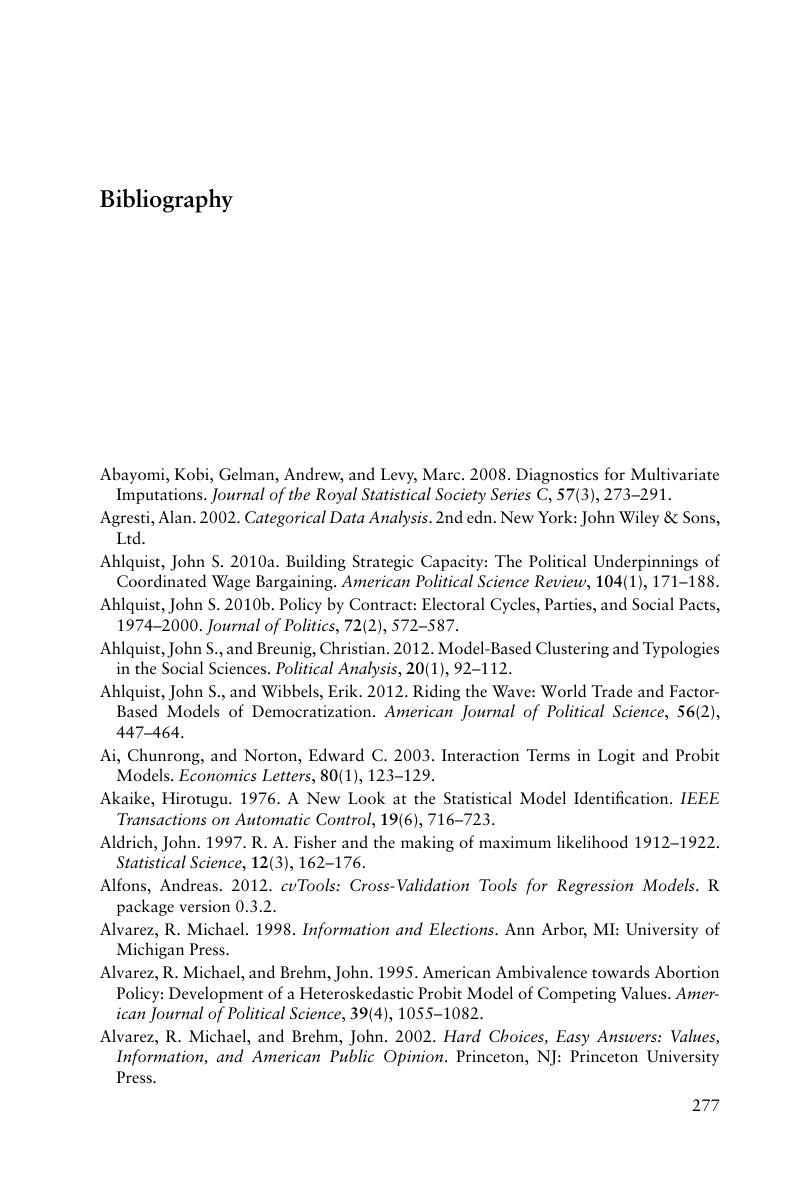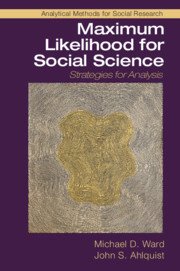Book contents
Bibliography
Published online by Cambridge University Press: 15 November 2018
Summary

- Type
- Chapter
- Information
- Maximum Likelihood for Social ScienceStrategies for Analysis, pp. 277 - 292Publisher: Cambridge University PressPrint publication year: 2018

